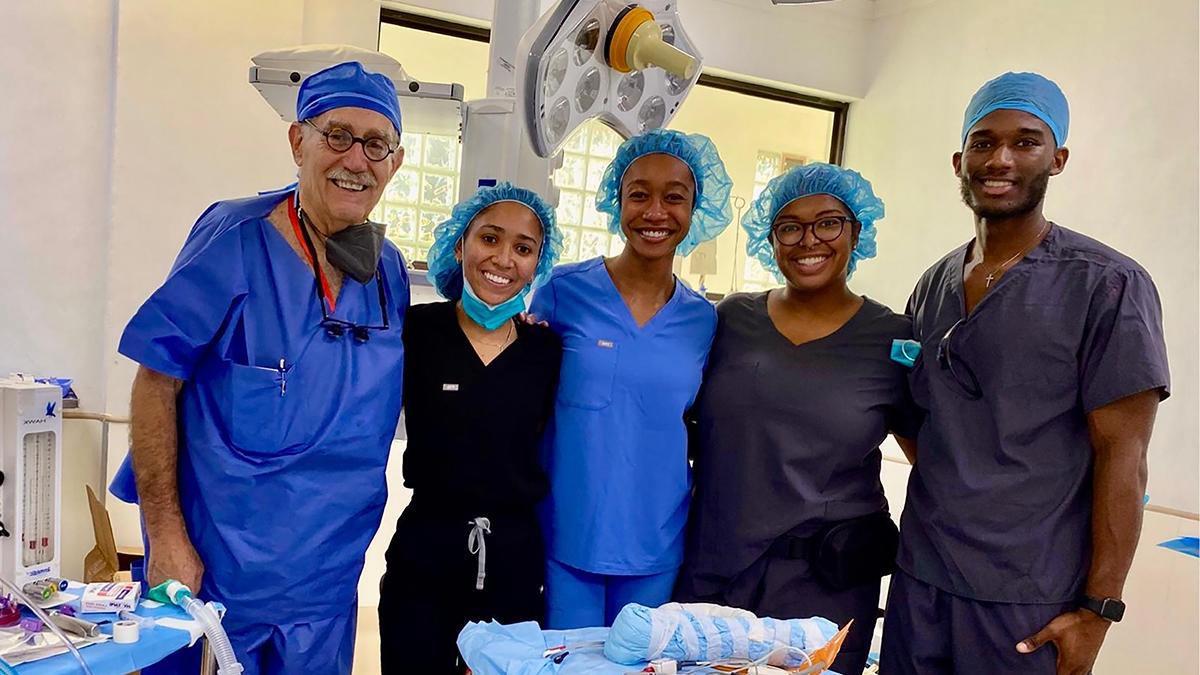‘Avengers’ research team makes xylazine discovery
The opioid crisis is just one health issue the Triangle Center of Excellence in Regulatory Science and Innovation addressed in its first year.

A few years ago, drug dealers began to mix fentanyl with xylazine, a veterinary tranquilizer colloquially known as “tranq.” Its use became associated with necrotic wounds developing in people who use drugs. From 2020 to 2021, xylazine-related overdose deaths spiked by 1,127% in the U.S. South.
To stem this growing crisis, decision makers needed data on xylazine’s effects on physiology.
To get the data quickly, the Food and Drug Administration turned to the Triangle Center of Excellence in Regulatory Science and Innovation, or Triangle CERSI, launched by the FDA in September 2023 with additional support from Eshelman Innovation, within the UNC Eshelman School of Pharmacy. Based at UNC-Chapel Hill, the multi-institution consortium is led by Carolina and Duke University, in partnership with North Carolina Central University, NC State University and the Burroughs Wellcome Fund.
One week after Triangle CERSI’s launch, the FDA awarded a comprehensive grant to a group of Carolina researchers to study xylazine from a range of perspectives. Principal investigator Zoe McElligott, associate professor in the UNC School of Medicine’s psychiatry and pharmacology departments, leads the group.
“The CERSI grant allowed us to spring into action,” says McElligott. “We assembled an Avengers-style team to tackle the xylazine problem from different angles.”
A year later, the FDA funded five more research projects, bringing the award total to $11 million. The FDA will award the Triangle CERSI up to $50 million during its first five years.
True partnership
The CERSI mission is to help the FDA keep up with today’s rapidly evolving science and technology.
“This system of CERSIs was established with the FDA recognizing that they can’t be an expert in everything, especially at the rate science is going, and that they need top academic partners to address critical gaps in knowledge,” says Triangle CERSI’s UNC-Chapel Hill principal investigator Paul Watkins, professor in Carolina’s schools of pharmacy, medicine and public health. “The CERSIs have created a mechanism to rapidly fund close collaborations between FDA scientists and academics to address specific problems. It’s a true partnership.”
The xylazine project is one of five Triangle CERSI projects addressing the opioid crisis. Four other projects focus on how to analyze real-world data to improve cancer treatments, especially for ethnically and racially diverse populations. Two projects involve seeking input from patients on their experiences with treatments and clinical outcomes.
“We want to accelerate FDA’s access to emerging scientific approaches and solutions essential for faster, smarter and more efficient regulatory decision-making,” says Triangle CERSI executive director Christin Daniels, who is with Eshelman Innovation.
Remarkable discovery
The rapid-response research into xylazine is a great example of how the Triangle CERSI can make a difference. The Avengers-style team already made a remarkable discovery — that xylazine activates kappa opioid receptors much as fentanyl activates opioid receptors — which hints at why withdrawal from fentanyl in combination with xylazine is so severe.
In March 2024, one of the study’s researchers, Nabarun Dasgupta, presented the team’s early findings to the N.C. General Assembly’s House Subcommittee on Substance Abuse. Dasgupta is senior scientist at the UNC Injury Prevention Research Center and an innovation fellow at the Gillings School.
“The ‘bench science’ results from this elite team could have practical implications for how first responders, wound care experts, harm reduction communities and clinics that provide medications for opioid use disorder adjust their approach to treatment as they deal with the influx of adulterants to fentanyl,” Daniels says.







